The main aim here is to monitor the characteristics of MBGP routes. Following is the list of graphs displaying latest statistics. List of Available Graphs: More Info:
A Brief Introduction of MBGP: MBGP (Multicast Border Gateway Protocol), an extension of BGP, is a mechanism for the propagation of multicast routing information amongst different ASes (Autonomous Systems). Thus, just like what BGP does in the case of unicast routing, MBGP provides information about the reachability of various multicast networks and implements policy control for multicast routing. MBGP peers, the routers exchanging multicast routing information via MBGP, populate their local routing tables, referred to as MBGP-tables, using the route updates that they get from their neighbors. Each entry in an MBGP table corresponds to a route to a network and the networks are represented in CIDR notation, i.e. a 4-octet net-number followed by the net-mask A route is represented using two fields. One of the fields is the IP address of the next hop router and the other, called AS path, is a sequence of ASes that the packets have to hop through to reach the destination-network. The later field, AS path, is what most of our work on MBGP topology has been based on. MBGP routes, like BGP routes, are the shortest path from the router to a network. The basic difference between BGP and MBGP lies in the manner in which these routes are used. For unicast routing BGP routes are used to decide the interface on which the packets are to be forwarded to. On the contrary, for multicast routing MBGP routes are used to perform the RPF check, i.e. to decide the interfaces on which the packets are *not* to be forwarded. If a router receives a packet destined for a multicast group on an interface, it does a look up on the MBGP table to check if the interface that the packet was received from also leads to the shortest path to the source of the packet. If the check succeeds, the packet is forwarded on the other interfaces. The packet is discarded otherwise. go top Affects of Glitches in MBGP on the Multicast Routing: The MBGP infrastructure of the multicast Internet does not always work as expected. The flaws creep in because of two primary reasons: (1) misconfigured MBGP peers and (2) hardware failure, that is the failure of the physical links and/or devices like switches, routers etc. Such flaws directly affect the accuracy of the route advertisement process amongst the MBGP peers. The glitches in route advertising may result into classic network problems like isolated network clusters and routing blackholes. As mentioned earlier, MBGP routes are used to perform the RPF check. If route to a network is not available to a router or is wrong, the RPF check for the incoming packets might fail. Consequently, though a router might be getting packets destined to a group from a source, it might not forward them to the downstream routers/hosts. go top Problems Due to /32 Routes: Basically, a /32 network is a single host network. An entry in MBGP routing tables for such a network implies that the route leads to a single host. Although this does not cause a routing error and does not represent a "wrong" configuration, it sure is a "bad" configuration somewhere in the network (including configuration-problems causing redistribution of /32 DVMRP-routes into MBGP cloud). Such routes defeat one of the main motives behind MBGP, route aggregation (this reduces state maintained at the routers, which in turn increases scalability). go top
|


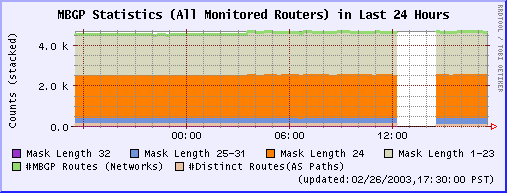 Last 24 Hours
Last 24 Hours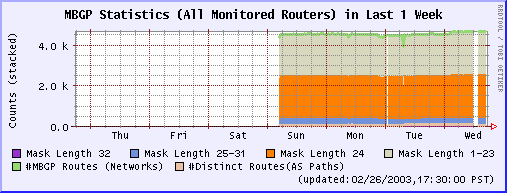 Last 1 Week
Last 1 Week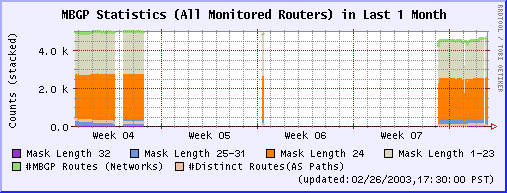 Last 1 Month
Last 1 Month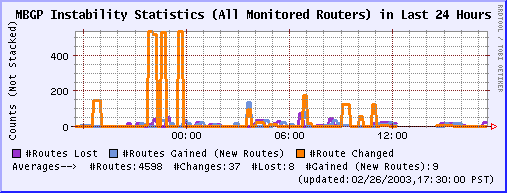 Last 24 Hours
Last 24 Hours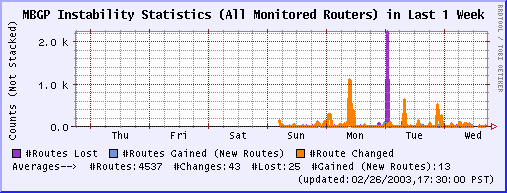 Last 1 Week
Last 1 Week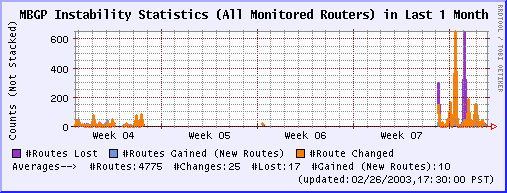 Last 1 Month
Last 1 Month